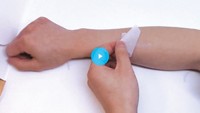Advertisement
Grab your lab coat. Let's get started
Welcome!
Welcome!
Create an account below to get 6 C&EN articles per month, receive newsletters and more - all free.
It seems this is your first time logging in online. Please enter the following information to continue.
As an ACS member you automatically get access to this site. All we need is few more details to create your reading experience.
Not you? Sign in with a different account.
Not you? Sign in with a different account.
ERROR 1
ERROR 1
ERROR 2
ERROR 2
ERROR 2
ERROR 2
ERROR 2
Password and Confirm password must match.
If you have an ACS member number, please enter it here so we can link this account to your membership. (optional)
ERROR 2
ACS values your privacy. By submitting your information, you are gaining access to C&EN and subscribing to our weekly newsletter. We use the information you provide to make your reading experience better, and we will never sell your data to third party members.
Materials
Covid-19
Scientists take a closer look at materials for homemade masks
Study examines fabric pore size and the effects of static electricity on filtering tiny aerosol particles
by Bethany Halford
June 24, 2020
| A version of this story appeared in
Volume 98, Issue 25

People seeking to protect themselves from SARS-CoV-2, the virus that causes COVID-19, are donning face masks as they head out to shops and restaurants. But data on what materials are best for homemade masks have been tough to come by. A group at Stanford University and the air filter company 4C Air studied how well various materials filter tiny aerosol particles, how breathable each material is, and how static electricity changes a material’s performance (Nano Lett. 2020, DOI: 10.1021/acs.nanolett.0c02211).
It’s important to consider all these parameters when determining what materials to use for a mask, says Yi Cui, the Stanford materials scientist who led the research effort. For their studies, Cui and colleagues used the same equipment that’s used to certify N95 face masks—the gold standard in filtering small particles. They tested how effective materials are at filtering 0.26 µm aerosols and measured pressure changes as air flows through the materials, which determine their breathability. The researchers also looked at the materials’ microstructures to visualize their pore sizes.
The team found that facial tissue, like Kleenex, works well as a filter and could be used as a disposable material inside a fabric mask to boost its effectiveness. The researchers also determined that spunbond polypropylene, which is found in some types of bedding material and some reusable shopping bags, works surprisingly well at filtering, especially when given a static charge by rubbing it with a latex glove. N95 masks also use charged materials to trap particles.
“If someone has polypropylene at home, I encourage them to use it,” Cui says. “If you don’t have it, cotton is fine. Just use a few layers.”
Yang Wang, an engineer at Missouri University of Science and Technology who is also studying the filtration performance of household materials notes we still don’t know how much virus is present in 0.26 µm aerosols. And he says that many fabrics that aren’t good at filtering such small aerosols still provide protection by “preventing the spread and inhalation of larger respiratory droplets.”





Join the conversation
Contact the reporter
Submit a Letter to the Editor for publication
Engage with us on Twitter